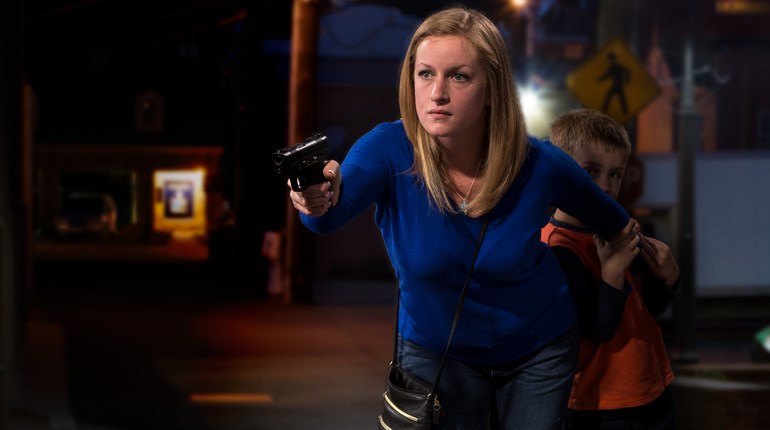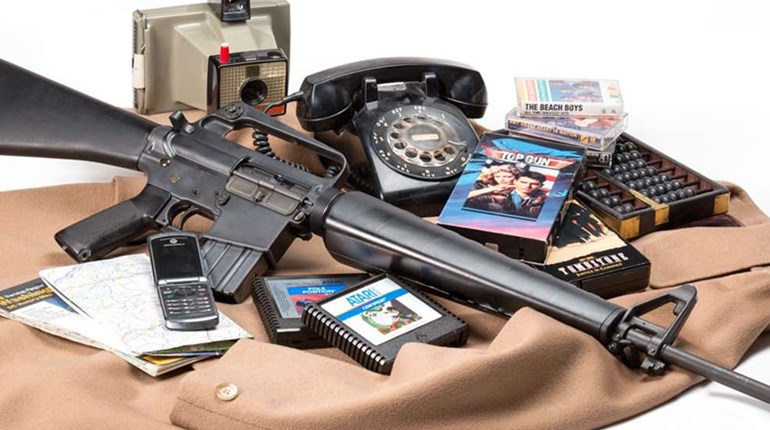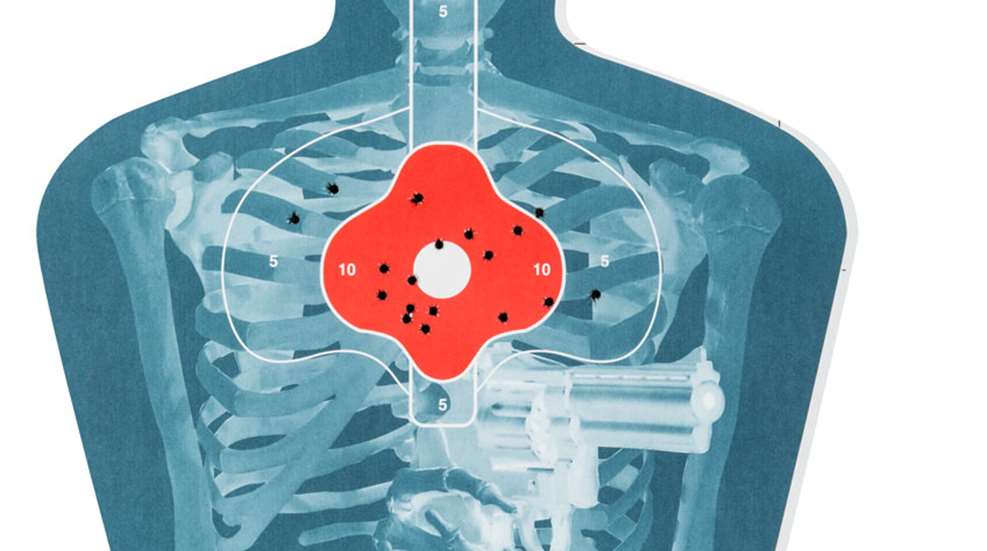
There are many thoughts regarding how much accuracy is good enough for deadly force encounters involving a handgun. The problem with asking this question is it doesn’t present the full picture. On the one hand, you have to be accurate enough to stop the deadly threat. What does that mean, exactly? Therein lies the problem: Nobody can say with absolute certainty. Then, there is the idea you need to have crazy-accurate shooting skills like those that defy trick-shooter ability. More often than not, folks settle with having decent accuracy skills. From one point of view all of these are correct. What separates them is the time, resources and finances you have available for training.
Shooting is like any other athletic endeavor. It takes knowledge, practice and discipline. First, you have to know what you are doing; what it means to be accurate. Then, you have to practice and not just practice, but practice correctly. Lastly, you have to be disciplined enough to stay the course to reach your goal. I get asked a question a lot in classes: How accurate is good enough? My response is pretty simple: You have to be accurate enough to save your own or loved one’s life firing the fewest rounds necessary to stop the deadly threat. Where this becomes complicated is the realities of a deadly force encounter are chaotic, unpredictable and fast. When we take a look at the accuracy required in these situations, you want your skill to be more in line with general marksmanship preparedness.
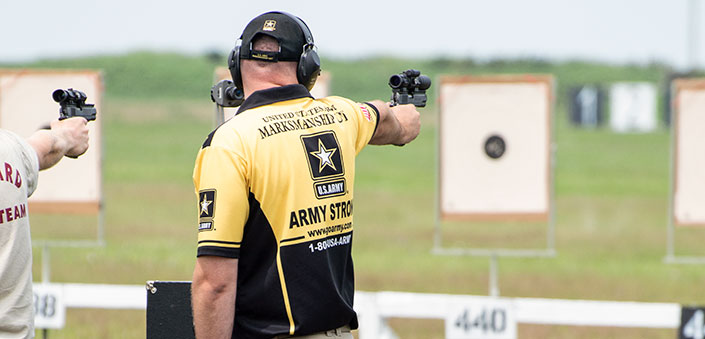
Durability, as it relates to shooting in high stress, is a term I use to describe the ability to withstand pressure without significant deterioration in skill quality. What you have to realize is nobody will rise to the occasion. Instead they will default to their level of training. That means, if you didn’t put much effort into your accuracy skills they will only get worse under pressure. How much worse is unknown, but what we know is they will not get better. When the pressure to perform increases, it is normal to see a deterioration in skill or quality. If you put in hard work to develop your accuracy skill level to a general marksmanship preparedness level, you should be able to weather the storm. The goal is to recognize stress will have a detrimental effect on many fronts. If we develop our shooting skills to this general level, even if it deteriorates it should not deteriorate beyond reasonable expectations for most deadly force encounters.
The benefit of “general” is it is broad in nature, which works well in an unknowable event. While there are statistics that point out many deadly force encounters occur at close ranges, there are no guarantees. We want to avoid becoming specialists who focus on particular aspects of self-defense shooting. Instead, we want to be generalists who, while we may not be able to drill bullseye targets at longer ranges, we understand marksmanship requirements. The other concern is allowing close-range scenarios to allow some to create excuses for not developing their general marksmanship preparedness. Even at close ranges you can miss, especially under stress in a chaotic environment.
Training programs should be designed so they are focusing time, finances and resources toward the general side of the house, including accuracy and speed skills. While I want to be fast at close ranges, how fast is fast enough? If you want to be super-fast at close range, you will sacrifice skill development or, more importantly, skill maintenance in other areas. You now become a specialist. I put more stock in someone who is accurate on a consistent basis, who can, on command, meet a minimum accuracy standard that is observable, measurable and repeatable. This means they have developed their skill well enough that they are reliable under stress. It also means their skill level is durable to sustain breaks, such as when you don’t have the time to train or practice.
You want a training program or system—designed to focus your time, finances and resources—that best supports your needs. In this case, we are defining your needs as those most common for the concealed-carry practitioner. They should be broken down into three areas: Critical, important and advanced. Yes, all of these skills are valuable. The problem is how it draws on your time, energy and finances or is in direct competition with what little free time you have. The ultimate goal should be to meet a minimum standard for all critical skills first. Dedicate yourself toward this goal so your decision-making is easier. If you have to choose between practicing these critical skills or other shooting activities, the choice should be easier. When your time, finances and resources are in surplus, use them to develop these critical skills. If you feel you have met the minimum standards for critical skills and still have surplus, then venturing into the important or even advanced skills makes sense.
I get it, working on the critical skills can lack the fun factor of other skills. The critical skills represent your foundation and without them developed to a minimum standard, the important and advanced skills may be wasted. I believe most people have reached a minimum standard with their critical skills after approximately 40 hours of formalized instruction. I hedge this claim with the fact not all formalized instruction is the same. In general, a student who has undergone 40 hours of formalized instruction over a short duration, say 12-16 months, should have the critical skills necessary for a solid foundation. Having met the standards here allows you to add more skills to your inventory. While nobody can definitely describe the type of deadly force encounter you may experience, it is far better to plan for the worse than simply hope for the best.
When you have invested this much time into your skill development it signifies a higher level of awareness. You realize bad things can happen. You are investing in preparation to avoid if possible, but manage the worst case to the best of your ability. I find it valuable to partition these foundational skills. In so doing, it allows you to quickly focus on the most-likely scenarios; while still acknowledging the unpredictability of these incidents. It creates a framework for maximum utility in your preparation as well as a roadmap toward achievement. The data you collect along the way in the form of performance standards helps focus your time, finances and resources on the areas needing attention. They also help keep you honest and focused. When sustainability comes into the picture, it is much easier to keep up than to catch up.
What do these critical skills look like? They are going to focus on three areas: Safety, gun handling and marksmanship. One of the most-important skills we pass along is safety. As a community it only benefits us to train in the safest-possible manner. While interacting with handguns or any firearm is inherently dangerous, there are simple measures that, if followed, greatly reduce the risk of an accident or injury. Learning the firearm safety rules and integrating them into your daily handling of firearms is a cornerstone to a competent shooter. How to administratively load and unload your handgun would be part of your gun-handling skills to develop. Since you will be handling guns more regularly, learning the correct techniques to load your firearm as well as how to ensure you have correctly unloaded the firearm demonstrate competent gun handling. These skills will be useful for other activities such as dry-fire practice and cleaning your handguns. Understanding how to clear basic stoppages will ensure your practice sessions are not overly affected as well as learning to reload after you have expended all the ammunition in your magazine.
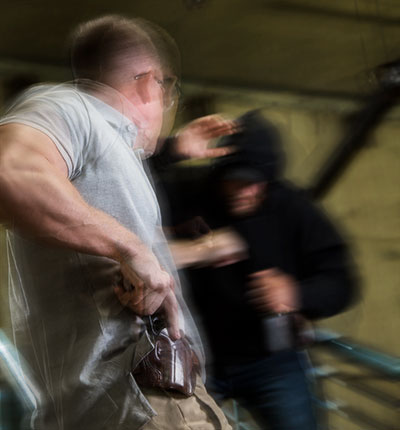
Once you have the safety and gun-handling skills under your belt, it sets you up to explore the marksmanship skills. There are dozens of ways to teach these skills, different orders or trains of thought. To some extent it doesn’t matter, what matters is sufficient time is spent on developing these skills to a minimum standard. Learning how to properly hold or grip the handgun is an often-overlooked subject. A good firing grip helps manage recoil, which in turn helps with your follow-up shots, should they be necessary. The grip will lead to your stance and ways to improve your stance for marksmanship. While you will seldom have the perfect stance in a deadly force encounter, there is no reason not to learn it in the beginning. It significantly helps the learning process when students learn how stance and grip help mitigate recoil. This allows them to focus more on sight and trigger management. There are lots of different types of handgun sights on the market so learning how to use yours and what correct sight alignment and sight picture look like is important. At some point, all roads will lead to trigger management. You have to learn how to use your trigger, and what I mean specifically is learn how to move the trigger with minimal sight disruption. Once you fire the shot you now have to follow through in anticipation of having to fire more shots.
The work you have put in up to this point has set you up for the application side. We need to work on bringing the handgun from its method of carry. We are talking about drawing from the holster in both the open and concealed condition. Leading up to this will be working from the ready position. There are several different types of ready positions and each has their merits, but are not without a downside. Pick one—probably the low-ready position—and practice applying your marksmanship skills from this position. An often-overlooked skill is being able to draw to the ready position, then allowing the situation to dictate whether deadly force is necessary. Practicing from a ready position provides a stepping stone on the way to the target. You are learning how to move the gun across space to a specific point where you will be required to verify your sight picture before you apply trigger-management skills ending with follow-through. This, in turn, sets you up to practice drawing from the holster. While most will be carrying concealed, you have to learn the correct drawstroke from an open condition first. A common mistake is to look at the drawstroke as a single motion. In truth, it is a series of steps. Learn the steps slowly, then gradually add speed. At this point, you can intermix drawing from concealment to the ready position and drawing to the target to help deal with the unknowable.
There are a lot of skills you could develop. However, when you consider the amount of time most will put into developing their shooting skills—along with the time it takes to maintain them—you quickly realize the need to start somewhere. Learning these critical skills first, then adding to your inventory will ensure you put first things first:
• Knowing how to safely behave around firearms
• General administrative tasks such as loading and unloading
• Fixing stoppages
• Learning how to reload
These initial steps will pave the road to start on marksmanship. Next, more-advanced concepts can be explored, including:
• Gripping the gun correctly
• Using stance to help manage recoil, resulting in the ability to deliver repeated, accurate shots
• Focusing on sight and trigger management along with follow-through, which gives the opportunity to truly develop marksmanship skills
• Applying your marksmanship skills from ready positions
• Drawing from the holster
These advanced skills round off the critical skills. Don’t be in a hurry to get to these skills. Spend the time honing critical skills first; it will pay off in the long run.












